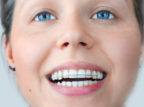- Blogs
11 Aug, 2019
Conventional Orthodontics vs. Functional Orthodontics (Dental-Facial Orthopedics)

The functional orthodontics is relatively less talked about and heard about. What makes them different from conventional orthodontics is that they not only straighten the person’s teeth, but also improves the facial profile by repositioning the upper and lower jaw. Poor alignment of either upper or lower jaw may affect the bite. It can also lead to symptoms such as neck pain, migraine, should pain, headache, sleep apnea, TMJ dysfunction, and much more.
Conventional Orthodontics
In case of crowded teeth, the traditional orthodontics work by extracting the teeth for creating more space in the person’s mouth. The dentist in Huntington Beach usually extracts four bicuspid teeth for creating enough room for straightening the patient’s teeth. However, it’s said that tooth extraction makes a person’s smile less broad and much narrower. It can also become the reason for a flattening facial profile, which can’t be corrected in future.
Functional Orthodontics
The functional orthodontics has a different approach. Unlike the conventional method, here there is no tooth extraction. Instead, it works by expanding the jaw for making more room to accommodate all the teeth. A mouth appliance is used for widening the jaw. The appliance is required to be kept in place for some time so that both the upper and lower jaw can be widened. It helps in creating a balanced profile. It can also help in treating sinus and sleep apnea issues.
If the patients wear the dental appliance diligently, the results can be incredible. The functional orthodontic is better as no teeth need to be extracted and the end results are far better.
There are different approaches for straightening the teeth and it is the patient or their parents in case of kids to decide the treatment option. While making the decisions one thing should be considered that conventional method offers only straight teeth while the functional method offers several other benefits. Also, there is no need for tooth extraction and all your natural teeth will be preserved, which is the ideal scenario. Weighing the pros and cons you can make the decision.






















